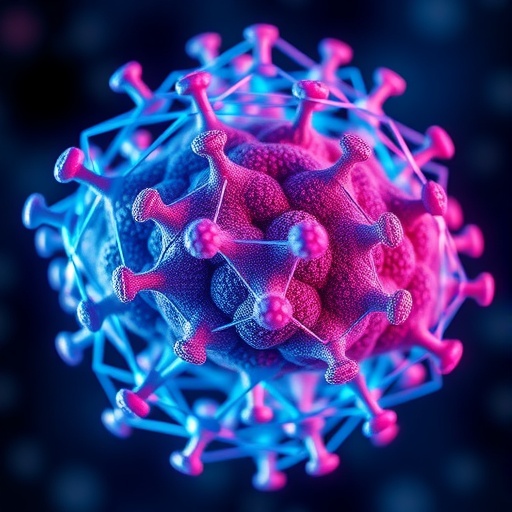In the rapidly advancing fields of quantum chemistry and materials science, the reliance on first-principles methodologies like density functional theory (DFT) has become the norm. However, as system dimensions increase, these methodologies become prohibitively expensive in terms of computational resources. The intricacies involved in modeling quantum interactions necessitate substantial computational power, which could deter progress in various applications. This challenge is compounded by the von Neumann bottleneck, which hinders digital computers’ energy efficiency. To address both issues, recent research proposes an innovative solution through a software-hardware co-design that employs a resistive memory-based reservoir graph neural network.
The core of this innovation is the reservoir graph neural network (RGNN), a novel paradigm that offers a fresh approach to modeling complex ionic and electronic interactions. Unlike conventional methods that depend heavily on detailed computational processes, RGNN utilizes a reservoir computing framework to achieve remarkable efficiency. By harnessing the power of this neural network, researchers demonstrate that complex computations can be streamlined, significantly reducing the energy footprint associated with traditional first-principles methods. This paradigm shift signifies a broader trend towards integrating machine learning with quantum mechanics, pushing the boundaries of what is computationally feasible in materials science.
According to the findings, the RGNN proficiently tackles various computational tasks, such as predicting atomic forces, estimating Hamiltonians, and determining wavefunctions. In a substantial breakthrough, the network accomplishes these calculations with astounding success. Particularly noteworthy is the reported ability to achieve comparable accuracy while drastically minimizing computational costs. For atomic force predictions, reductions of approximately 10,000-fold in computational expenses were observed, showcasing the RGNN’s potential to transform resource-intensive molecular dynamics simulations.
Next in line, the inference of Hamiltonians—a critical aspect of quantum mechanical calculations—exhibited cost reductions on the order of 1,000,000-fold when compared to the traditional methods. This remarkable performance indicates that researchers could potentially tackle larger and more complex systems previously thought intractable with conventional computational approaches. Similarly, wavefunction predictions made possible by the RGNN were accomplished with a cost reduction of about 1,000-fold, paving the way for more sophisticated analyses in quantum chemistry.
One of the most compelling aspects of the proposed framework is the reduction in training costs. Utilizing reservoir computing results in a significant decrease of nearly 90% in the training phase of the neural network. This aspect not only enhances efficiency but also underscores the feasibility of scaling the approach for larger datasets and more complicated interactions. The combination of reduced training time and enhanced accuracy presents a powerful incentive for researchers in academic and industrial fields alike to adopt this methodology.
On the hardware front, this research embodies a stringent evaluation conducted on a 40-nm 256-kb in-memory computing macro. This robust validation process serves as a percentage benchmark for hardware improvements, focusing on the area-normalized inference speed and energy efficiency of the co-design architecture. The findings indicate a substantial leap in performance, with assertions of improvements in inference speed on the order of approximately 2.5 times across multiple metrics. Such an enhancement positions this technology as a formidable option against existing state-of-the-art digital hardware.
In addition to speed improvements, the device showcased remarkable advancements in energy efficiency. When compared to prevailing digital hardware solutions, the memory-based architecture achieved enhancements in energy efficiency up to 4.4 times. This significant leap in both speed and efficiency highlights the promise of integrating advanced hardware architectures with innovative computational methodologies to address pressing problems in quantum simulations.
The implications of these findings stretch far beyond the confinements of computational chemistry. By harnessing the capabilities of the reservoir graph neural network and resistive memory, researchers may unlock novel pathways for material discovery, aiding in the development of advanced materials with targeted properties. Whether it’s discovering new materials for batteries or optimizing catalysts for chemical reactions, this innovative technology underscores a potential renaissance in how researchers approach these challenges.
Moreover, the research underscores the significance of interdisciplinary collaboration in advancing technological frontiers. Success in developing and optimizing the RGNN required expertise from multiple fields, including artificial intelligence, materials science, and quantum mechanics. This highlights an emerging trend of combining insights and techniques from diverse scientific domains to create synergistic solutions that drive innovation.
As the landscape of computational science evolves, efficiency and scalability will become increasingly critical considerations. The adoption of reservoir graph neural networks may signal a shift in how computational problems are approached, offering robust frameworks that can deliver substantial performance gains while minimizing resource consumption. This transformative approach aligns well with contemporary demands for sustainable, energy-efficient technologies that can support the burgeoning needs of scientific inquiry.
In summary, the marriage of software innovations with cutting-edge hardware may become the linchpin in overcoming the computational challenges presently facing quantum chemistry and materials science. As the prowess of this technology develops, it holds the promise of not only accelerating research but also reshaping the future landscape of material science. The contributions made by Xu and colleagues are exemplary of the groundbreaking work that is needed to push the boundaries of what’s achievable in computational modeling, heralding a new era of efficiency and feasibility in quantum simulations.
The findings presented offer a glimpse into the future of computational methodologies, inviting further exploration and validation by the scientific community. It is clear that with continued dedication to both software efficiencies and hardware advancements, the next generation of computational science stands poised to achieve breakthroughs previously limited by the constraints of traditional methodologies.
Subject of Research: Efficient modeling of ionic and electronic interactions
Article Title: Efficient modeling of ionic and electronic interactions by a resistive memory-based reservoir graph neural network
Article References:
Xu, M., Wang, S., He, Y. et al. Efficient modeling of ionic and electronic interactions by a resistive memory-based reservoir graph neural network.
Nat Comput Sci (2025). https://doi.org/10.1038/s43588-025-00844-3
Image Credits: AI Generated
DOI: 10.1038/s43588-025-00844-3
Keywords: reservoir computing, quantum chemistry, materials science, machine learning, energy efficiency, computational modeling, neural networks, hardware-software co-design, ionic interactions, electronic interactions.




